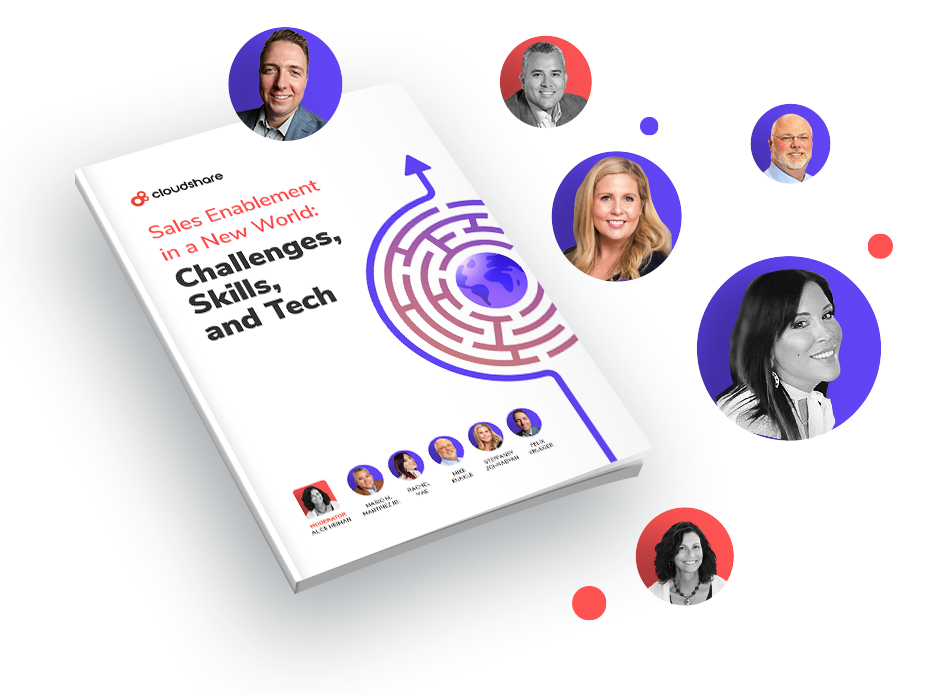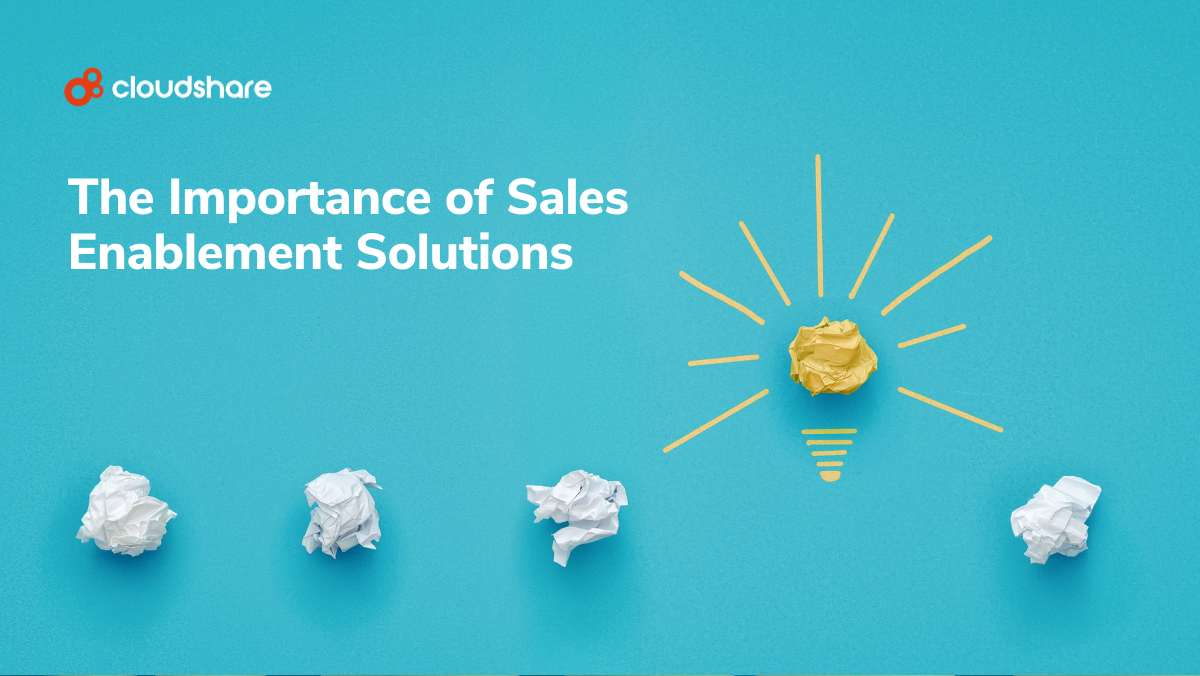
“Try before you buy” is more than just a fun slogan, it’s become a necessity for today’s companies. It’s human nature that customers will want to see what they’ll be getting for their money before completing a sale. But when it comes to selling software solutions, the trial period can be far more complicated than testing the comfort level of a bed or the suitability of a desk for a home office.
If you’re a sales engineer tasked with showing off software to potential buyers, don’t discount the merits of the Proof of Concept stage. It’s a crucial aspect of any IT presentation, and companies choosing to skip it often regret doing so in the end. With smart proof of concept sales, engineering teams can achieve a more product-led sales experience for their prospects and speed up time to value with the software product overall.
What is a Proof of Concept?
A Proof of Concept (POC) is a trial experiment done with customers in a realistic sandbox environment to prove that a design concept has the potential to be useful and profitable. POCs aren’t intended to generate an immediate sale. Instead, a POC environment can be used to adjust your company’s software product during development to better suit the needs of your buyers.
The POC process is an essential stage of product development and the sales cycle. Many companies don’t understand the importance of POC development in sales engineer training, and failed or poorly implemented POCs end up damaging the possibility of a future sale.
It’s important that you understand how POCs work and how sales and pre-sales engineers can improve their POCs to raise consumer engagement and sales.
Get expert insights from sales industry leaders

Properly defining objectives
It’s crucial that you have an idea of what you want to accomplish and what specific issues you intend to solve through the software product from the beginning.
The POC presentation should allow both you, the vendor, and the consumer to confirm that the solution on display is on the right track before product development finishes. To do so, the vendor needs to understand the consumer’s preferences and requirements regarding the software, which often change as the POC goes on.
Don’t be afraid to modify your goals as your audience provides feedback during the POC. Occasionally, a prospect might want a slightly different solution or the criteria with which they measure success might change. They might not even be vocal about this, but you could see from where they stall in the POC, or where the most interaction occurs, exactly what elements of the solution are working, and which are missing the mark.
In general, a prospect benefits from a self-service POC by checking the usability of the product in their own time, ensuring the software is compatible with their needs, and comparing the product’s value relative to other competitors in the market. That’s a lot of parameters, so it’s smart to expect moving goalposts.
In a cloud-based POC environment, you can easily modify your POC as these goals evolve. This added level of flexibility can make all the difference.
Utilizing the cloud
An online cloud POC has made it easier to deal with problems that plague traditional POCs. Previously, companies had to pay for a lot of manual effort, from shipping new hardware to installing additional software and providing technical support to customers during demonstrations and POCs.
In the cloud, consumers get a first-hand look into your software solution’s performance under real-world circumstances in a convenient way and can provide feedback instantly. Plus, the experiment can be done in a controlled POC environment so that any tests can be run without interfering with the customer or vendor environment. This is much more secure, and also helps to jump a common prospecting hurdle, where the customer needs to get legal or security sign-off before they can even try your product in context. With a cloud POC, they can jump right in, and through a safe, sandbox environment, see the value of your software tool in practice – risk-free.
Above all, the internet has proven to be a critical sales POC tool thanks to its ubiquity. Consumers worldwide regardless of location or equipment can access a cloud POC through online web browsers, with a link sent directly to their email account, resulting in a level of accessibility and usability not seen for software demos and POCs in the past.
Tips for sales engineers
Proofs of concept are an important part of a sales engineer’s role. Companies will often use KPIs such as the number of POCs, the number of technical POCs closed, and the number of successful POCs closed as metrics to measure performance, as well as overall business success.
As a sales engineer, to keep these numbers high, you need the persuasive skills of a salesperson combined with the technical knowledge of an engineer. The next time you’re building a sales demo or POC for a software solution, consider these tips.
Tell a story
Customers want to know what you can do for them. Don’t just throw facts, figures, and marketing content onto a PowerPoint deck and call it a day. Generate a comprehensive narrative proving that your product is the perfect solution to your customer’s problems.
Cloud-based POCs have the added advantage of allowing you to create real-world scenarios, providing you with the tools to monitor progress and engagement.
Don’t forget to offer up brand champions and use cases to prove to your prospects that they are joining a successful community. Show that buyers will be part of a thriving support network after making the purchase. You can do this by making introductions to other clients and explaining how your solutions have helped them in the past. This validation is a great way to show that your solution works and is liked by the community.
Understand the audience
While preparing for your POC, study your audience. Know their most significant problems and try to address them in the sales demo.
Because audiences tend to have a broad range of interests, ask some informed questions during the presentation, and use the answers to tailor your content to their preferences and needs.
Finally, don’t forget to end the presentation with a question and answer session, which is an often neglected aspect of a POC demonstration. Forbes describes a Q&A as a tool that “can add to the authentic, in-the-moment feeling” which can become a presentation’s “secret sauce.” This approach allows you to be the listener and get a sense of what the prospect is looking for in their own words. A Q&A also raises audience engagement and can provide you with new ideas to consider for your future POCs and marketing efforts.
Address the competition
Don’t pretend you’re the only solution on the market. Your company doesn’t operate in a vacuum, and your customers know this. Potential clients will likely be comparing your product to others in the market, so prepare your answers when the audience inevitably asks for differences between your solution and a competitor’s.
Keep it brief
Twenty minutes is a recommended benchmark for a demo or POC. If your presentation is too long, you risk boring your audience with too much information. Keeping it short can help you to target the meeting to exactly what you need to cover, or the customer’s contextual need. If you’re struggling to keep to the twenty-minute mark, ask yourself, is your focus too broad? Do you truly understand what the customer is looking for?
One major advantage of cloud-based POCs is that they are extremely interactive. Potential customers can test your software, and experience real-world scenarios, and sales engineers can step in and provide assistance whenever needed.
Cloud-based POCS are essential today
POCs will continue to be a powerful tool for your company to validate ideas and gauge market sentiment, but the winning demos and POC environments will be those that are flexible, contextual, and immersive.
CloudShare offers customizable virtual IT labs that you can use to create agile POCs for your company that can be easily distributed to any number of users in a buying organization. With CloudShare, you can assess the quality of your POCs in real-time, collect actionable data on usage, and increase the operational efficiency of your sales and marketing teams, all while being deliberately product-led with your software technology – letting the value of the solution speak for itself from day one.
This post was originally published on May 2019 and updated on September 05, 2022.



